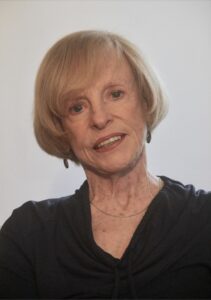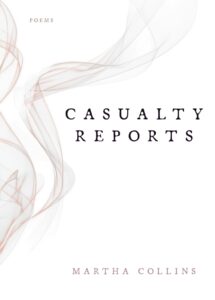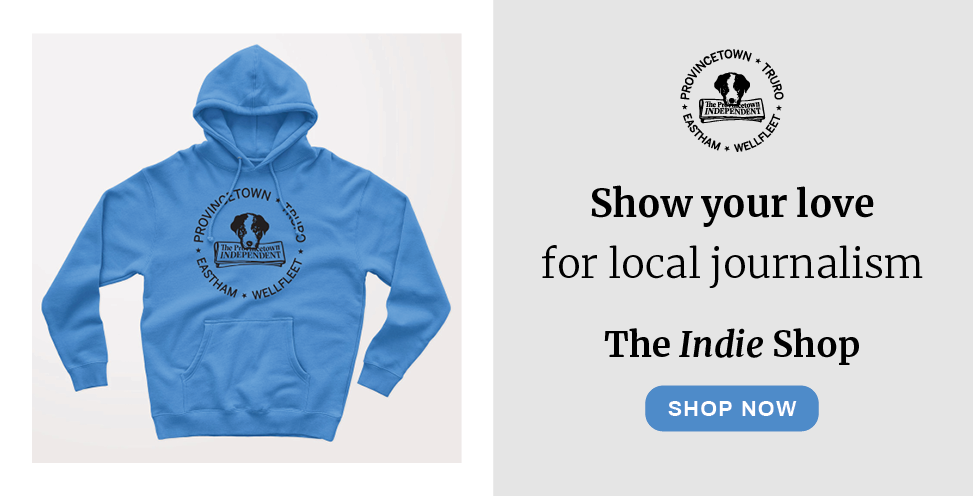Martha Collins’s haunting, intimate poems are a form of conversation with readers on subjects as varied as her family history, racism, politics, and, most essentially, the poet herself, “the body embodied.”

Collins’s work spans four decades, but she steers clear of citing poetic influences — it depends on what she’s reading at the moment, she says. Still, her poems bring to mind Emily Dickinson’s floating, confessional lines, Robert Frost’s meditations on weather — both external and internal, and Walt Whitman’s affinity for nature.
Collins says she wrote her first poem in the second grade, but she didn’t dedicate herself to poetry until she was in her 30s. She has been teaching at the Fine Arts Work Center in Provincetown since 2008.
Growing up in Des Moines, Iowa, Collins played piano and violin. She still sings in a choir in Cambridge, where she lives. That background formed the basis for the musicality of her words and phrases. “I’m always listening to the music of language,” she says. “But when you practice music, you know where you’re going. When you write poems, you don’t.” Writing a free verse poem is less like playing music, she says, and more like composing.
The idea of poetry as a way to hold the past accountable and shed light on what has been kept in the shadows is woven through Collins’s work.She calls White Papers (University of Pittsburgh Press, 2012) “a fusion of personal and historical information” about her family’s unknowing complicity in the slave trade. Both she and her mother played the piano, and researching the source of the ivory keys, Collins read about the African slave labor required to take elephant tusks across Africa to provide piano keys for musically inclined Americans like her family.

Collin’s 11th and most recent publication, Casualty Reports (University of Pittsburgh Press, 2022), includes an extended sequence about the history of coal. Her great-grandfather was a coal miner who grew up in a town dependent on the industry. Collins writes of nature’s capacity to heal from the ravages of mining.
Not all her work looks so far back in time. Some of her recent poems are more immediate. “Suddenly, my personal life also began calling to me,” Collins says. Because What Else Could I Do (University of Pittsburgh Press, 2019) includes 55 untitled poems written after the sudden death of her husband in 2016.
Between 2014 and 2023, Collins, in collaboration with Vietnamese poets, translated and published five books of Vietnamese poetry. “I learned enough about the language to know how it works,” she says. Collins protested against the Vietnam War. Now, in reading poems by Vietnamese poets, she “discovered the country, the people.” She also traveled to Vietnam.
“For me,” she says, “it’s been a kind of reparations for our involvement.”
IN ILLINOIS
My father’s father’s father owned the
had a share in the Enterprise mine the
Enterprise Coal & Coke Company 1871
he was a shareholder, being a coal digger, kept
a log of entries, shafts & air shafts, rooms
by number & number of feet died 1881
My father’s father went down to a river town
to work came back to the mining town
where his father— went down in the Paradise
Mine a miner & later a mine examiner tested
the air the face & the roof Sundays & holidays too
walked three miles out & back when there was no train
My father whose mother kept him out of the mines kept
his father’s father’s oil lamp kept his father’s carbide
& safety lamps kept a box of wicks—picks—globes kept
his father’s 50-year union pin his first aid pin his
flashlight safe for use kept manuals papers This lamp
was given all labeled This pin was given kept it all it was
his legacy labeled dated 1965 & signed & kept for me
from Casualty Reports (University of Pittsburgh Press, 2022)
COLORING IN
In the infant’s brain,
color is seen
on the right side: there are
no colors, just color.
In the child’s brain,
when colors are given
names, they are seen on the left,
as separate, distinct.
In the child’s first drawings,
air is white, as are
the insides of outlined
people and things.
In the next drawings, color
is basic, bright,
yellow is sun, red is house,
green is grass, black
sometimes outlines people
and things, people
are brown or pink or sometimes
white as air is still white.
First published in bath magg (2020)



